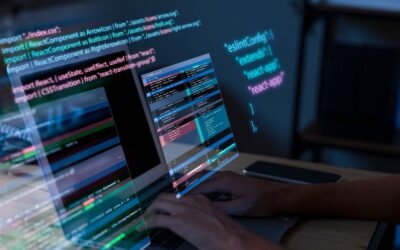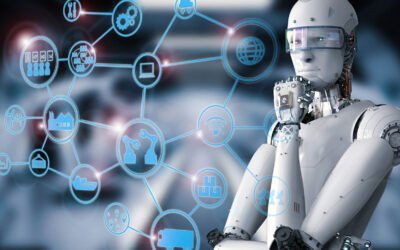Tech Art: The Intersection of Technology and Creativity

Introduction
Tech art, a fascinating blend of technology and creativity, has emerged as a significant field in contemporary art and design. It involves the use of digital tools, software, and innovative technologies to create works of art that push the boundaries of traditional mediums. Artists who work in this domain, often referred to as tech artists, merge their artistic vision with technical expertise to produce engaging and immersive experiences. From virtual reality (VR) installations to algorithm-generated art, tech art showcases the limitless potential of merging human creativity with cutting-edge technologies.
In the digital age, tech art reflects how society interacts with and is influenced by technology. It challenges conventional notions of art by presenting new ways of experiencing visual culture. Whether it’s interactive sculptures, augmented reality (AR) exhibits, or digital animations, tech art transforms how people engage with artistic expressions.
The Evolution of Tech Art
The roots of tech art can be traced back to early experiments in combining art and technology, with pioneers like Nam June Paik, who explored video as an artistic medium in the 1960s. Over time, as technology evolved, so did the possibilities for artists to integrate digital tools into their work. The advent of personal computers, graphic design software, and the internet in the late 20th century paved the way for a new era of tech-driven art forms.
Today, tech art encompasses a wide array of mediums, including digital painting, 3D modeling, sound design, and interactive media. Technological advancements like artificial intelligence (AI), machine learning, and robotics have expanded the horizons for artists, allowing them to experiment with new techniques and materials. These tools give artists unprecedented control over their creative process, enabling them to build complex, dynamic, and highly customizable works of art.
Key Techniques and Tools in Tech Art
The world of tech art is vast, and artists use a variety of techniques and tools to bring their ideas to life. Some of the most common methods include:
Digital Painting and Illustration
Many tech artists use digital painting software like Adobe Photoshop or Procreate to create highly detailed illustrations and compositions. Digital brushes and tools simulate traditional media like oil, watercolor, and pencil, giving artists flexibility in their approach.
3D Modeling and Animation
Programs like Blender, Maya, and Cinema 4D allow tech artists to build three-dimensional models and animate them in virtual spaces. These tools are used in a range of applications, from video games to virtual reality experiences, offering immersive and interactive artistic environments.
Generative Art
Generative art involves the use of algorithms and AI to generate images, sounds, or forms. Artists provide initial parameters, and the system produces variations of the work, often leading to unexpected and striking results. Platforms like Processing and P5.js are popular tools for creating generative art.
Virtual Reality and Augmented Reality
With the rise of VR and AR, tech artists have been able to create fully immersive experiences. Using headsets like Oculus Rift or augmented reality applications, viewers can explore digital environments and interact with virtual objects, blurring the line between physical and digital art.
The Role of Artificial Intelligence in Tech Art
Artificial intelligence has become a powerful tool in the hands of tech artists, enabling them to push creative boundaries in ways previously unimaginable. AI can analyze data, generate images, compose music, and even assist in decision-making processes that shape the final artwork. For example, AI programs like DeepArt and Runway ML allow artists to input styles, themes, and patterns, and the software generates visuals based on these inputs.
One prominent example of AI-driven tech art is the creation of “AI-generated portraits” using neural networks. These portraits are often the result of machine learning algorithms trained on thousands of images. The output is a completely new, computer-generated image that mimics the style or content of the original dataset. This approach questions the role of human agency in art creation, as it challenges the conventional understanding of the artist’s hand being essential to the creative process.
Tech Art in Popular Culture
Tech art has found its way into mainstream culture, influencing various industries such as entertainment, fashion, and advertising. In video games, tech art plays a pivotal role in creating visually stunning and interactive environments. Tech artists collaborate with game developers to produce lifelike characters, dynamic lighting, and immersive landscapes.
In the fashion world, tech art is used to design virtual clothing, 3D-printed accessories, and digital fashion shows. Major brands have started experimenting with AR apps that allow users to “try on” clothes virtually, offering a futuristic shopping experience. The fusion of technology and fashion demonstrates how tech art is shaping not only creative industries but also consumer behavior.
Music videos, film, and digital advertising have also embraced tech art to craft innovative, visually striking content that captivates audiences. For instance, the use of motion graphics, CGI (computer-generated imagery), and interactive media has revolutionized how stories are told on screen, merging artistry with technical mastery.
The Future of Tech Art
As technology continues to evolve, the future of tech art holds endless possibilities. Emerging technologies like quantum computing, blockchain, and bioengineering could further transform how art is conceptualized and created. Blockchain, for instance, has given rise to the NFT (non-fungible token) movement, allowing digital artworks to be sold and traded as unique assets, granting artists new avenues for monetization and recognition.
Moreover, advancements in AI and robotics will likely lead to even more sophisticated collaborations between humans and machines in art creation. In the future, tech artists may collaborate with AI as co-creators, generating works that neither could produce independently. This symbiotic relationship between technology and creativity has the potential to reshape the artistic landscape entirely.
Conclusion
Tech art represents a vibrant, constantly evolving field that bridges the gap between technology and artistic expression. By leveraging the latest tools, from digital painting to AI-driven algorithms, tech artists are redefining what it means to create and experience art. As society becomes increasingly immersed in digital environments, the role of tech art will only continue to grow, inspiring future generations to explore the infinite possibilities of creativity in the technological age.
The intersection of technology and art provides a unique opportunity for artists and innovators alike to push the boundaries of creativity, unlocking new forms of expression that challenge traditional notions of what art can be. Tech art is not just the future of creativity—it’s the present.
FAQs
What is tech art?
Tech art, short for “technology art,” is an art form that integrates technology and creativity to produce innovative works. It often involves using digital tools, software, and emerging technologies like artificial intelligence, virtual reality, and 3D modeling to create unique artistic expressions.
How is tech art different from traditional art?
A: Tech art differs from traditional art by incorporating modern technology into the creative process. While traditional art relies on mediums like paint, clay, or pencil, tech art uses digital tools, algorithms, and virtual platforms. It enables the creation of interactive, generative, and immersive works that often cannot be achieved through conventional methods.








